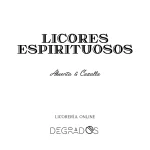The mojito, an iconic cocktail of Cuban origin, has transcended borders and has established itself as a liquid canvas for mixological experimentation. However, in this technical exploration, we delve into a novel approach: the use of Dominican black and white rums as structural pillars to reinvent this classic.
This article does not limit itself to conventional recipes; instead, it breaks down the chemical, sensory and technical synergy of both types of rum in the creation of mojitos that defy the expectations of the professional palate. Get ready for an in-depth analysis, optimized for bartenders and mixologists looking to elevate their craft.
The Essence of Dominican Rum: Black vs. White
White rum:
Dominican white rum, typically distilled from molasses and filtered to remove impurities, offers a clean, crystalline profile with citrus and floral notes. Its continuous column distillation process maximizes purity, reducing congeners that could dull the herbaceous undertones of spearmint, a critical component of the mojito. This rum acts as a neutral canvas, allowing the fresh ingredients – lime, sugar, soda – to express themselves without interference. Its low ester content (generally <50 g/hL) ensures a smooth integration with the acidic and sweet elements, achieving a balance that stands out in a technical mojito.
Black Rum:
On the other hand, Dominican black rum, often aged in charred oak barrels, brings a robust dimension to the cocktail. Its sensory palette includes notes of caramel, vanilla and spice, derived from prolonged interaction with wood and a higher congener content (up to 200 g/hL in some cases). This profile makes it a transformative agent in the mojito, where mint and lime intertwine with smoky and sweet nuances, creating a denser organoleptic experience. The key is its precise dosage to prevent the intensity of the dark rum from overpowering the fresh elements.
Deconstruction of the Mojito
The classic mojito depends on the interaction between five main components: rum, mint, lime, sugar and soda. However, when working with Dominican black and white rums, the mixologist must consider how each alters the molecular and sensory structure of the cocktail.
Lime acidity: Catalyst of balance
Lime, with a pH of approximately 2.2-2.4, is the acidic engine of the mojito. Its citric acid interacts with the alcohols in white rum, amplifying the citrus and floral notes, while in black rum, it softens the tannins derived from aging. For a mojito with white rum, a fresh squeeze with a volume of 20-25 ml per cocktail is recommended, ensuring that the acid enhances freshness without saturating. With black rum, a slightly smaller volume (15-20 ml) preserves the toasted notes without blurring them.
Peppermint: The aromatic soul
Peppermint (Mentha spicata) releases essential oils such as menthol and carvone, responsible for its characteristic freshness. In a mojito with white rum, peppermint acts as the protagonist, with 8-10 fresh leaves gently crushed to avoid the extraction of bitter chlorophyll. With black rum, it is suggested to reduce to 6-8 leaves and complement with a touch of basil (Ocimum basilicum) to introduce aniseed notes that harmonize with the spicy nuances of the rum. This subtle twist elevates the complexity without betraying the essence of the mojito.
Sugar: The molecular bridge
Sugar, either in the form of simple syrup (1:1) or granulated sugar, acts as a bridge between the acidic and alcoholic components. For white rum, a simple syrup with a touch of Dominican panela (1:0.1) adds a subtle earthy note that connects to the rum’s cultural heritage. For dark rum, a syrup infused with dried lime peel (0.5 g per 100 ml of syrup) reinforces the interplay between the toasty and citrus flavors, creating a unique cohesion.
Soda: The effervescent dimension
Soda is not merely a diluent; its carbonation (approximately 4-6 g/L of CO2) adds texture and elevates volatile aromas. With white rum, a neutral soda maximizes the clarity of the cocktail, while with black rum, a low-mineral soda (such as Perrier) preserves the deep notes without introducing metallic interference.
Mojito with White Rum
For a mojito with Dominican white rum, the preparation technique should prioritize sensory cleanliness. Start by gently crushing the mint leaves with 10 ml of simple syrup in a highball glass. Add 20 ml of fresh lime juice and 50 ml of white rum, mixed with 100 ml of soda. Crushed ice is crucial: its rapid dissolution (about 20% faster than cubed ice) ensures a controlled dilution that does not dull the flavors. Stirring should be minimal, using a bar spoon for homogeneous integration without releasing excess chlorophyll.
Mojito with Black Rum
With dark rum, the preparation takes a more layered approach. Muddle 6 mint leaves with 5 ml of infused syrup and 15 ml of lime juice. Add 45 ml of black rum and a finely chopped basil leaf. Top off with 80 ml of soda and large cubed ice for a slow dilution, preserving the intensity of the rum. A final dash of Angostura bitters (1 dash) can introduce an herbal counterpoint that enhances the spicy nuances.
The Dominican mojito can transcend the traditional format. For white rum, consider serving it in a white wine glass to concentrate the citrus and floral aromas. With dark rum, a balloon glass with an ice sphere maximizes the retention of toasty aromas. For a visual touch, incorporate a garnish of dehydrated lime peel sprinkled with cane sugar, which reinforces the sensory narrative.
Sensory analysis of the experience
A Dominican white rum mojito should be judged for its clarity and freshness. The nose is dominated by fresh mint and citrus notes with clean alcoholic undertones. On the palate, the entry is vibrant, with balanced acidity and an effervescent finish. By contrast, the mojito with dark rum offers a complex nose of caramel, vanilla and herbs, with a dense mouthfeel and a slightly smoky finish. The key for the mixologist is to ensure that no one component dominates, achieving a harmony that invites exploration.
The mojito, in its essence, is a balancing act. By incorporating black and white Dominican rums, the mixologist not only pays homage to the Caribbean tradition, but also opens new frontiers in technical mixology. The choice between black and white is not binary; it is an opportunity to experiment with sensory profiles, preparation techniques and innovative presentations. This approach, backed by a chemical and sensory understanding, positions the Dominican mojito as a benchmark for the professional bartender seeking to differentiate himself in a saturated market.






